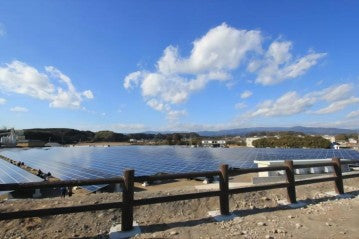
As the world seeks sustainable energy solutions, solar power has emerged as a promising alternative. Among the various solar energy systems available today, hybrid solar systems have gained significant popularity. In this blog post, we will delve into the concept of a 5kW hybrid solar system, exploring its features, advantages, and suitability for your energy needs.
What is a Hybrid Solar System?
Hybrid solar systems combine the best of both worlds: solar power and traditional grid electricity. These systems integrate solar panels, a battery storage system, and a grid connection, offering a versatile energy solution for both residential and commercial applications.
In a hybrid solar system, solar panels harness sunlight and convert it into electricity through the photovoltaic effect. This direct current (DC) electricity is then converted into alternating current (AC) by an inverter, which powers the electrical appliances in your home or office. Any excess energy generated by the solar panels is stored in batteries for later use, ensuring a constant power supply even during periods of low solar irradiation or at night.
The Power of a 5kW Hybrid Solar System
A 5kW hybrid solar system refers to a system that has a capacity to generate 5 kilowatts of power. This capacity is determined by the size and number of solar panels installed in the system. A typical 5kW hybrid solar system may consist of around 15 to 20 solar panels, depending on their wattage.
A 5kW hybrid solar system is well-suited for small to medium-sized homes or businesses with moderate electricity consumption. It can generate a substantial amount of energy, usually sufficient to power multiple appliances simultaneously, including refrigerators, televisions, lighting, and even air conditioning units. The excess energy produced during the day is stored in the battery system, allowing you to use it during nighttime or on cloudy days.
Advantages of a 5kW Hybrid Solar System
1. Energy Independence: One of the key advantages of a 5kW hybrid solar system is its ability to reduce reliance on the grid. By generating your own electricity, you can significantly reduce your monthly energy bills and gain more control over your energy consumption.
2. Cost Savings: Investing in a 5kW hybrid solar system can lead to substantial long-term cost savings. With reduced reliance on grid electricity, you can offset the rising costs of electricity tariffs and potentially even earn money by selling excess energy back to the grid through feed-in tariffs.
3. Environmental Benefits: Opting for solar energy is a sustainable choice that helps reduce carbon emissions and combat climate change. By choosing a 5kW hybrid solar system, you are actively contributing to a cleaner and greener future.
4. Backup Power Supply: The battery storage system in a hybrid solar system ensures a reliable power supply during grid outages or blackouts. This feature provides peace of mind, especially during emergencies or in regions prone to frequent power disruptions.
Conclusion
A 5kW hybrid solar system offers an efficient and reliable energy solution for homes and businesses alike. By harnessing the power of the sun and integrating battery storage technology, these systems provide a sustainable and cost-effective way to meet your electricity needs.
With advantages such as energy independence, cost savings, environmental benefits, and backup power supply, a 5kW hybrid solar system is an investment that pays off both economically and environmentally. By embracing solar energy, you are taking a proactive step towards a cleaner and more sustainable future.
If you are considering purchasing a solar energy system, the 5kW hybrid solar system should definitely be on your radar. Consult with a reputable solar energy provider to assess your energy requirements, evaluate your property's solar potential, and determine the optimal system configuration for your needs. Embrace the power of the sun and embark on your journey towards a brighter, greener future with a 5kW hybrid solar system.

0 comments